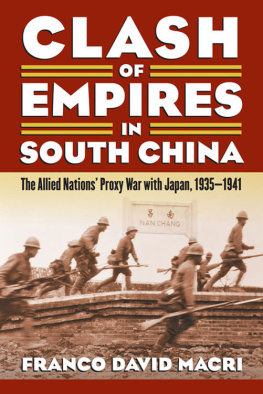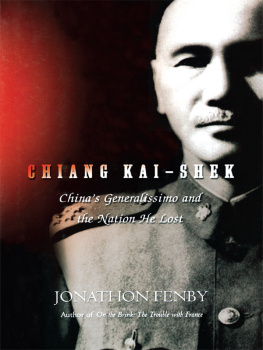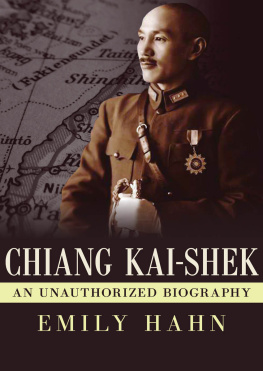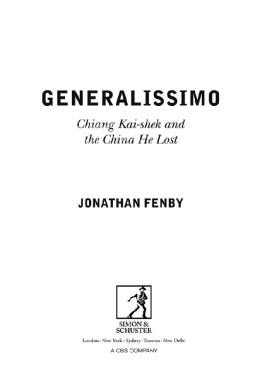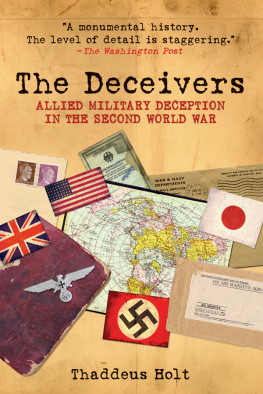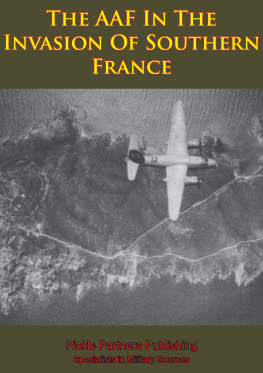CLASH OF EMPIRES IN SOUTH CHINA
MODERN WAR STUDIES
Theodore A. Wilson
General Editor
Raymond Callahan
J. Garry Clifford
Jacob W. Kipp
Allan R. Millett
Carol Reardon
Dennis Showalter
David R. Stone
Series Editors
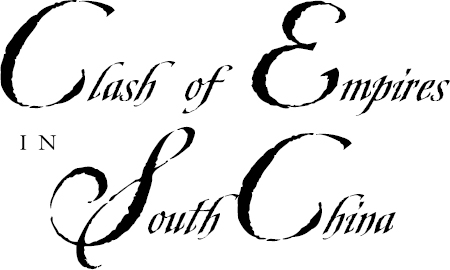
THE ALLIED NATIONS
PROXY WAR WITH JAPAN,
19351941
Franco David Macri

University Press of Kansas
2012 by the University Press of Kansas
All rights reserved
Published by the University Press of Kansas (Lawrence, Kansas 66045), which was organized by the Kansas Board of Regents and is operated and funded by Emporia State University, Fort Hays State University, Kansas State University, Pittsburg State University, the University of Kansas, and Wichita State University
Library of Congress Cataloging-in-Publication Data
Macri, Franco David.
Clash of empires in South China : the Allied nations proxy war with Japan, 19351941 / Franco David Macri.
p. cm. (Modern war studies)
Includes bibliographical references and index.
ISBN 978-0-7006-1877-4 (cloth : alk. paper)
ISBN 978-0-7006-2108-8 (pbk. : alk. paper)
ISBN 978-0-7006-2183-5 (ebook)
1. Sino-Japanese War, 19371945CampaignsChina, Southeast.
2. World War, 19391945CampaignsChina, Southeast. I. Title.
DS777.53.M2326 2012
951.04'2dc23
2012026191
British Library Cataloguing-in-Publication Data is available.
Printed in the United States of America
10987654321
The paper used in this publication is recycled and contains 30 percent postconsumer waste. It is acid free and meets the minimum requirements of the American National Standard for Permanence of Paper for Printed Library Materials Z 39.48-1992 .
To those who defended Hong Kong in December 1941

Contents

Illustrations

Acknowledgments
This book is the result of over five years of work, and its completion would not have been possible without the fellowship and support of colleagues, mentors, and friends at the University of Hong Kong. For helping to steer me through many of the complexities involved with the research, I would like to thank Chris Cowell, Dr. Carol Tsang, Satoko Handa, Laura Verner, Michelle Tong, Qian Gang, May Wong, Dr. Kris Erskine, Angharad Fletcher, Dr. Paul Wenham, Dr. Gerald Sellinger, Dr. Paul Spooner, and Dr. Priscilla Roberts. Deepest gratitude, however, is extended to my primary supervisor, Dr. Peter Cunich, whose advice and encouragement kept me motivated and focused. Additionally, it would not have been possible to complete this work without the studentship funding provided through the School of Graduate Studies. I am similarly appreciative of Vincent Chiu and Dr. Eric Chong at St. Johns College. I also wish to thank Du Juan Juan at the Chinese University of Hong Kong and Liu Hai Xia at Beijing Normal University in Zhuhai for their friendship and guidance.
Others helped greatly along the way, in a variety of circumstances, and to each of them I extend many thanks. Friends in Canada who provided invaluable assistance and encouragement include Kevin Brown, Paul Buhagiar, Sam Jagpal, Dr. Michael Klar, Jonathan Knell, Nigel Mackey, Norm McGlashin, Heather Nash, Jamie Ogle, John Pacheco, Karl Valaitis, and Dr. Tim Wilson. I was also quite fortunate to have studied Canadian military history under the supervision of Terry Copp at Wilfrid Laurier University, and to him I am grateful. In the United Kingdom, Dr. Ashley Jackson at Kings College was very helpful; his advice and encouragement are greatly appreciated. thanks are also due to Dr. Kristina Giannotta.
I would also like to acknowledge the Journal of the Royal Asiatic Society Hong Kong Branch for allowing me to use one of my articles that appeared in 2010. A quote from my article in the International History Review is also utilized. I would like to thank Mrs. Margaret Callan in Delta, British Columbia, for permitting me to reproduce one of her late husbands newspaper cartoons in chapter 9. Last, I am also most grateful to Michael Briggs, Larisa Martin, and the staff at the university Press of Kansas for supporting this project and for their patience and assistance with the many questions and problems encountered along the way.

Note on Romanization
Due to language constraints, Japanese and Chinese individuals and places are identified by using the most common spellings in the primary source materials consulted. Individuals are identified by the family name first. When possible, the more modern Chinese pinyin equivalent is inserted following the first usage of the name.
ONE

Collective Security in Asia: The Global Significance of Hong Kong and Southern China
In most accounts of the Second World War, China has not attracted much attention, and this is particularly true of the region south of the Yangtse (Yangtze) River. When authors have considered China, it has been presented largely as an Allied liability of limited significance. One of the important reasons for this characterization was the weakness of Chinas military forces; by the end of 1941, this condition enabled the Japanese to conduct operations in the southwest Pacific without fear of defeat in East Asia. Because of subsequent Allied failures in the region, the idea persists that Chinese efforts against the Japanese army were hopelessly ineffective. Although there were many setbacks between 1942 and 1945 for which several powers shared responsibility, this view cannot be supported when the period from 1937 to 1942 is examined closely. During this time the Chinese survived the initial onslaught and ground their enemies down in what became a stalemate of attrition. Despite widespread expectations of failure, the Chinese were not defeated. It is fair to say that many internal problems were presentpolitical, economic, and militaryand that these limited Chinas potential for waging war. Yet elements of the Chinese army improved as the Sino-Japanese War unfolded, and the Chinese were able to hold the Japanese and defend key strategic areas. Of these, southern China was certainly of great importance. Throughout the war the defense of southern China was vital for the continuance of Chinese resistance, and several Japanese offensives were defeated there. Chinese success in the south was due to a variety of reasons, but the level of international interest and influence in the region was highly significant. The involvement of third powers, albeit covert, was greater in southern China than elsewhere because it was one of the last areas free from Japanese occupation where foreign military resources could enter the country. This situation was significant because it enabled several powers to use their logistical support for China as a way to influence the actions of others.
Had war not erupted in other areas around the globe, the crisis in China would likely have remained a regional problem. But as the global international order disintegrated, the Sino-Japanese War emerged as an increasingly consequential geopolitical contest. This occurred because several influential third-power officials saw the wars continuation as a useful way to limit Japanese aggression elsewhere. For some, the commonality of interests in China also served to create an environment where the alliance against the Axis could be consolidated. In time, this proved to be the case, especially in the south. Chinas logistical gatekeepers were the British in nearby Rangoon and Hong Kong, along with the French placed between them at Haiphong. It was through these portals that munitions from the United States entered and where most of the key strategic resources earmarked for the United States and the USSR were exported. Because of this situation, however, Western relations with the Japanese deteriorated greatly. By the end of 1941 Japan attacked the forces of both the United States and Great Britain, in part because of its problems in China, thereby ushering in the start of the Pacific war. With this escalation, global conflict reached unparalleled heights, and the anti-Axis alliance was finally forged. But this evolutionary process had been at work for quite some time. Starting with the British, several future Allied powers had attempted to pursue a policy of collective security in southern China as a way to compensate for an earlier faith in disarmament and the lack of military preparedness that ensued. By 1941, the war in southern China had become a significant consideration in the formulation of Allied grand strategy. Historically, China has not been given sufficient attention as an international arena that contributed to the expansion of a wider conflict. Hence, one goal in the pages that follow is to address this historical oversight and increase our understanding of the Second World War as a whole. Another is to demonstrate how the war in southern China helped accelerate the end of British and Japanese imperial power, as each sought to challenge an array of enemies too numerous to fight successfully.
Next page
